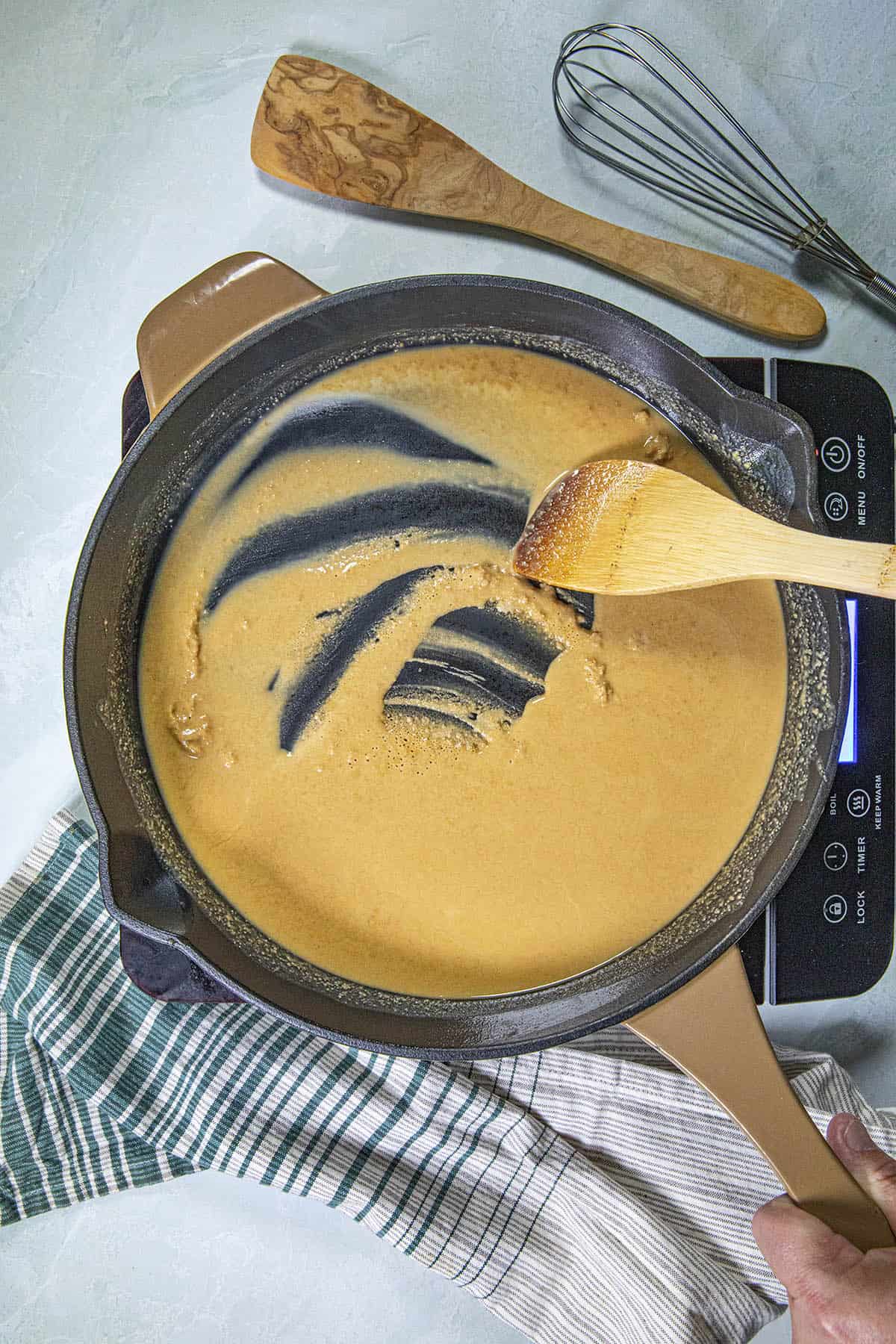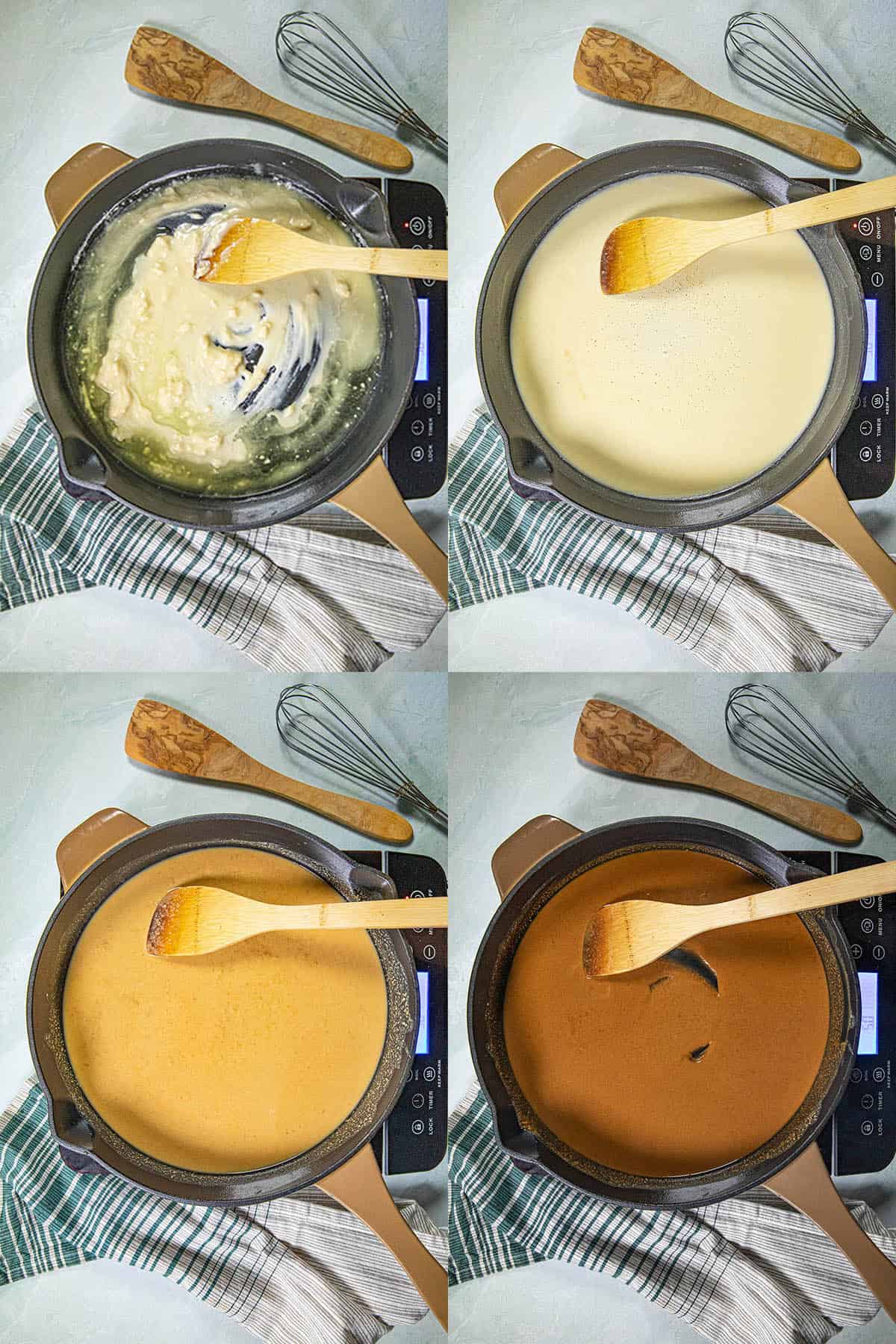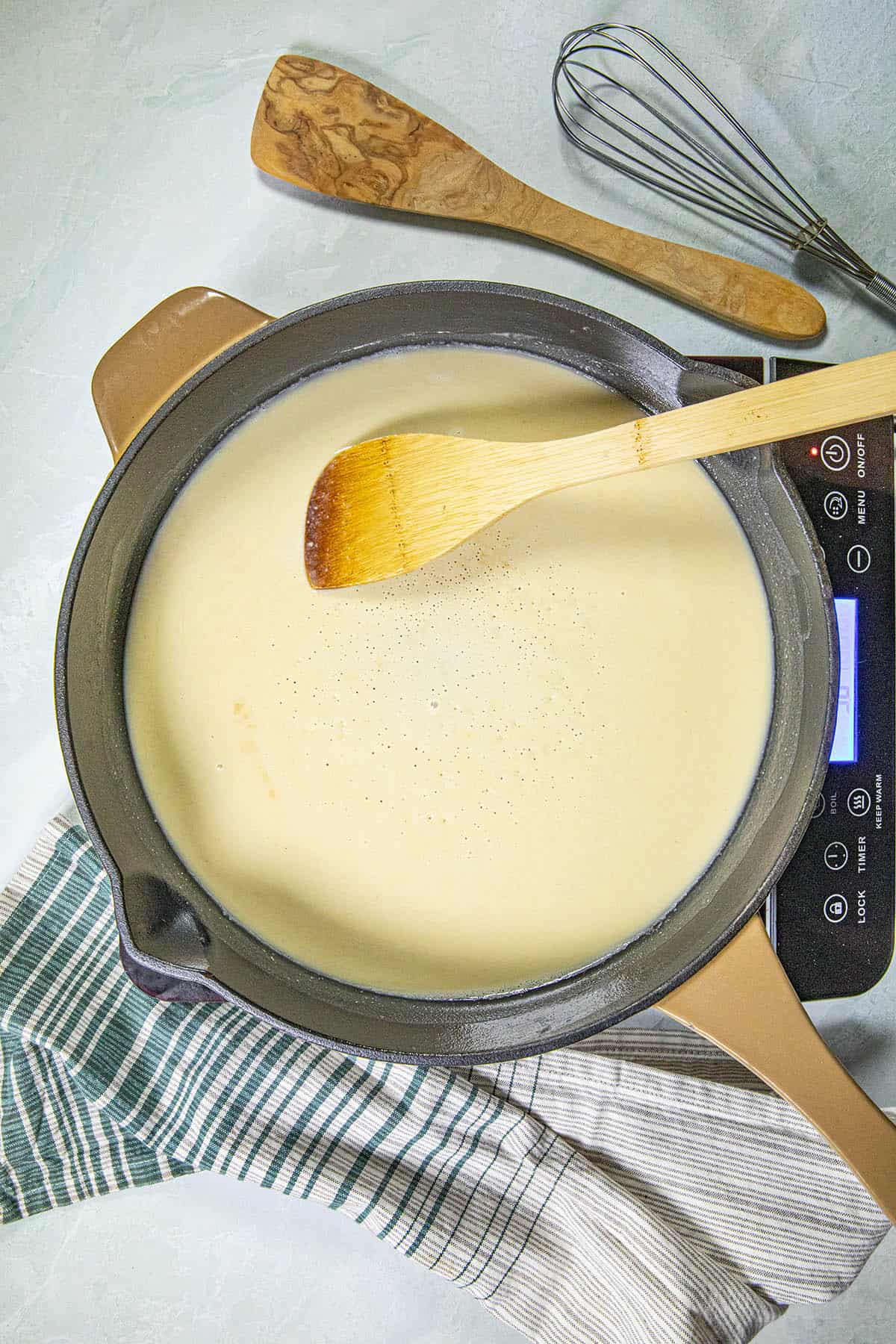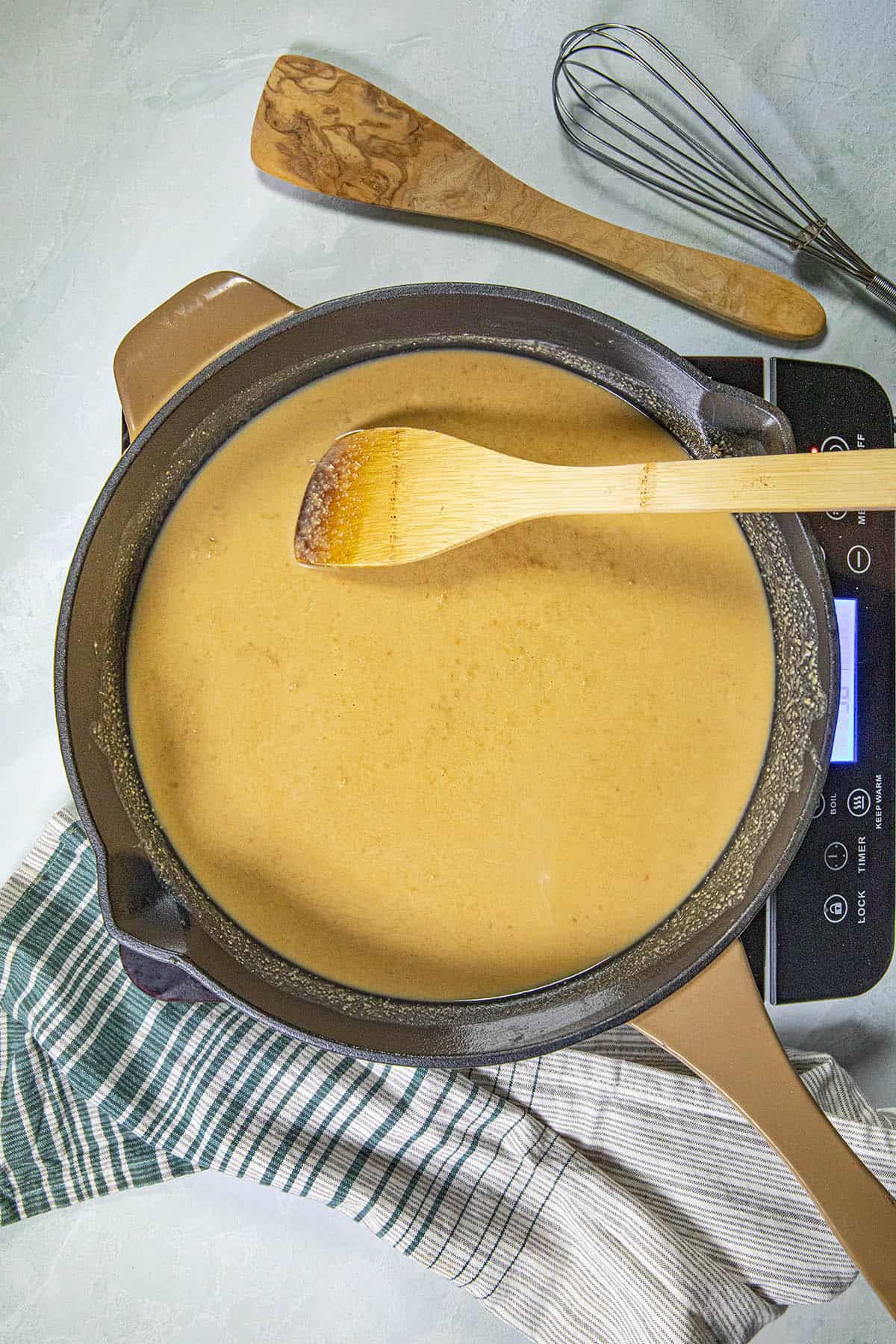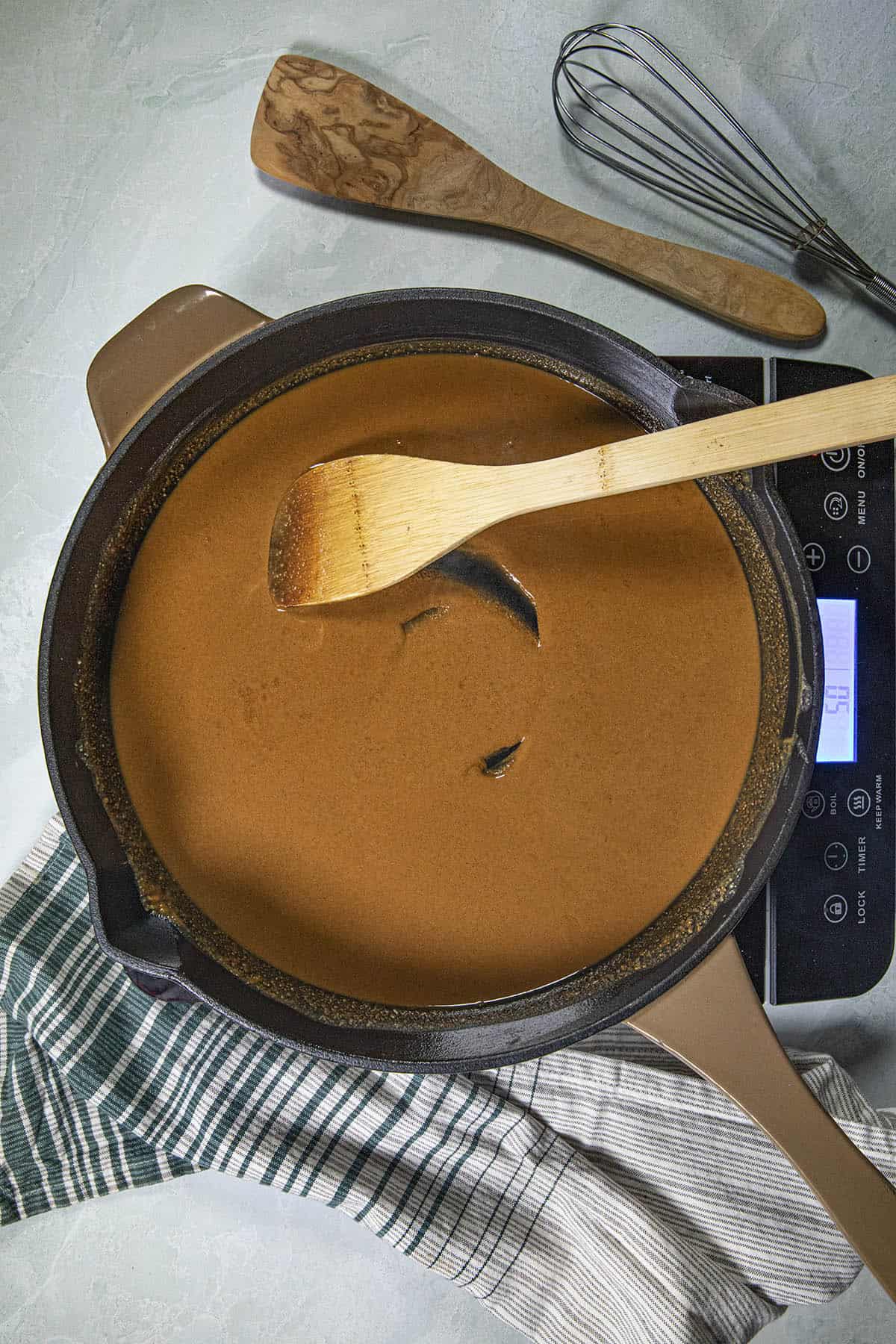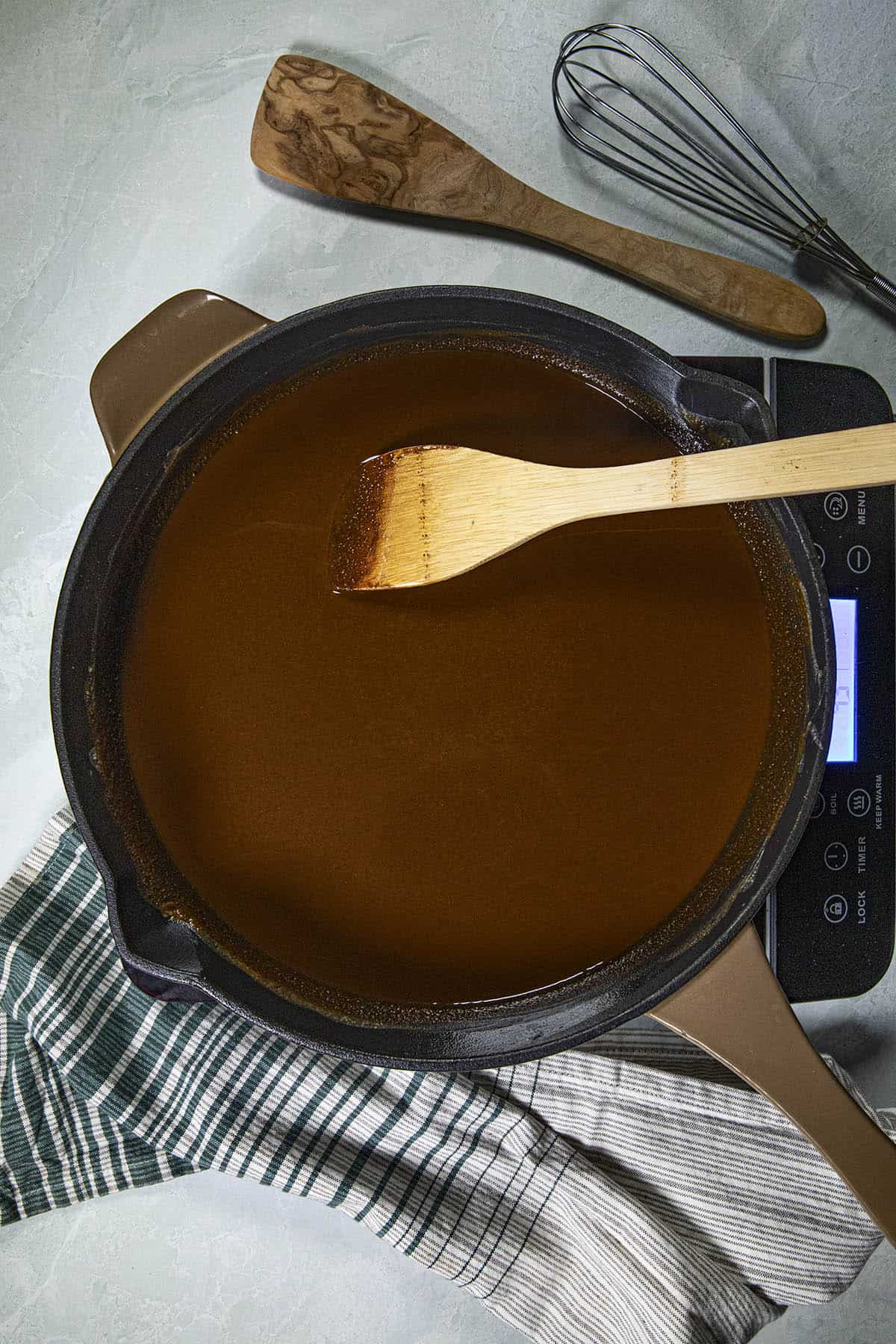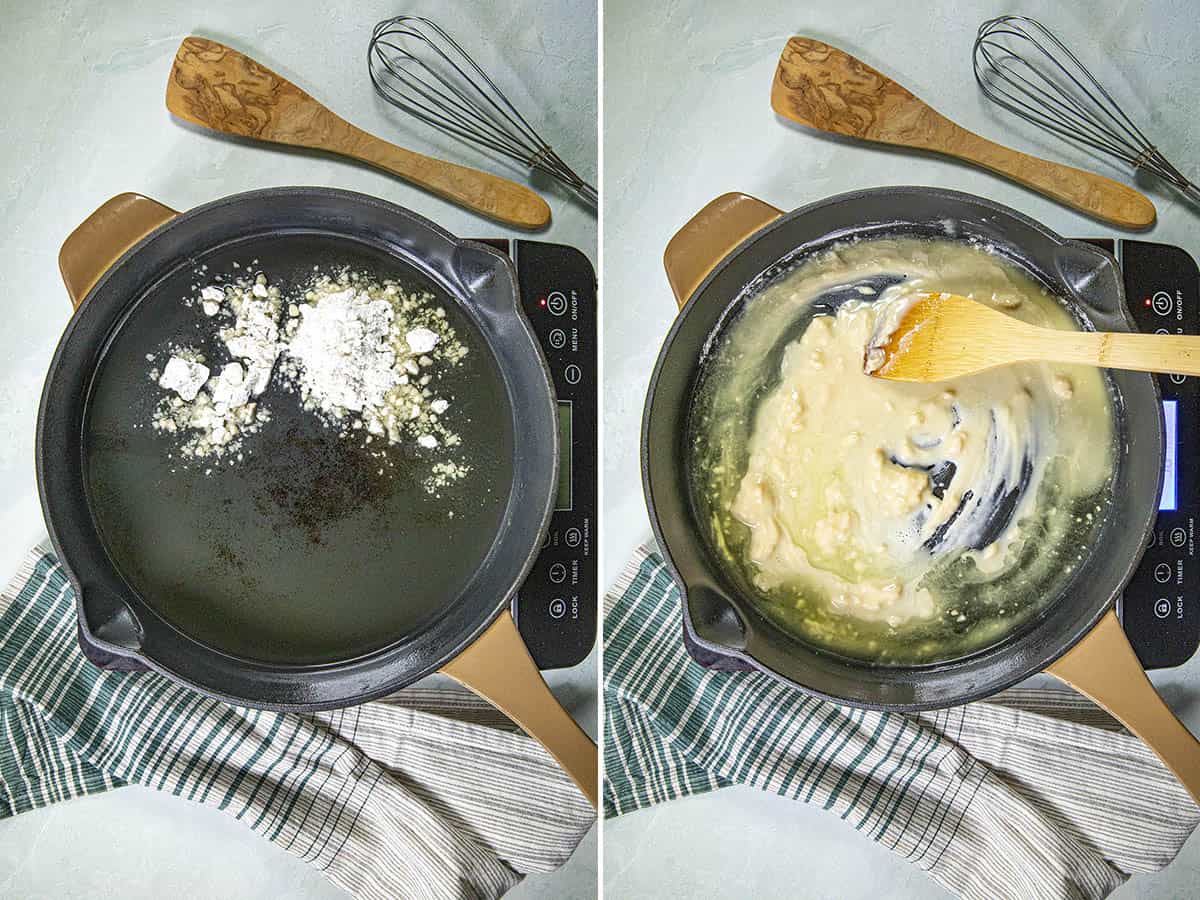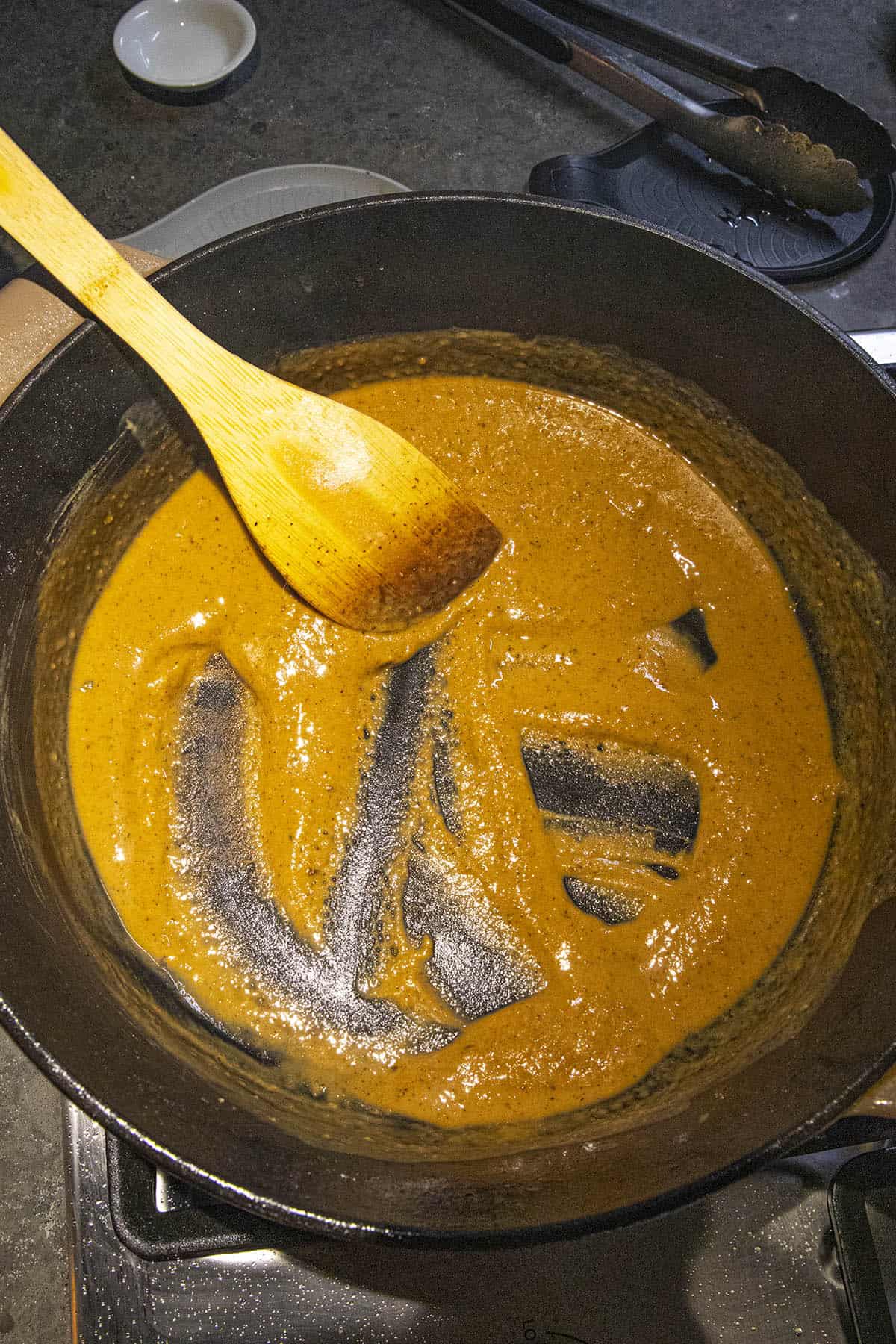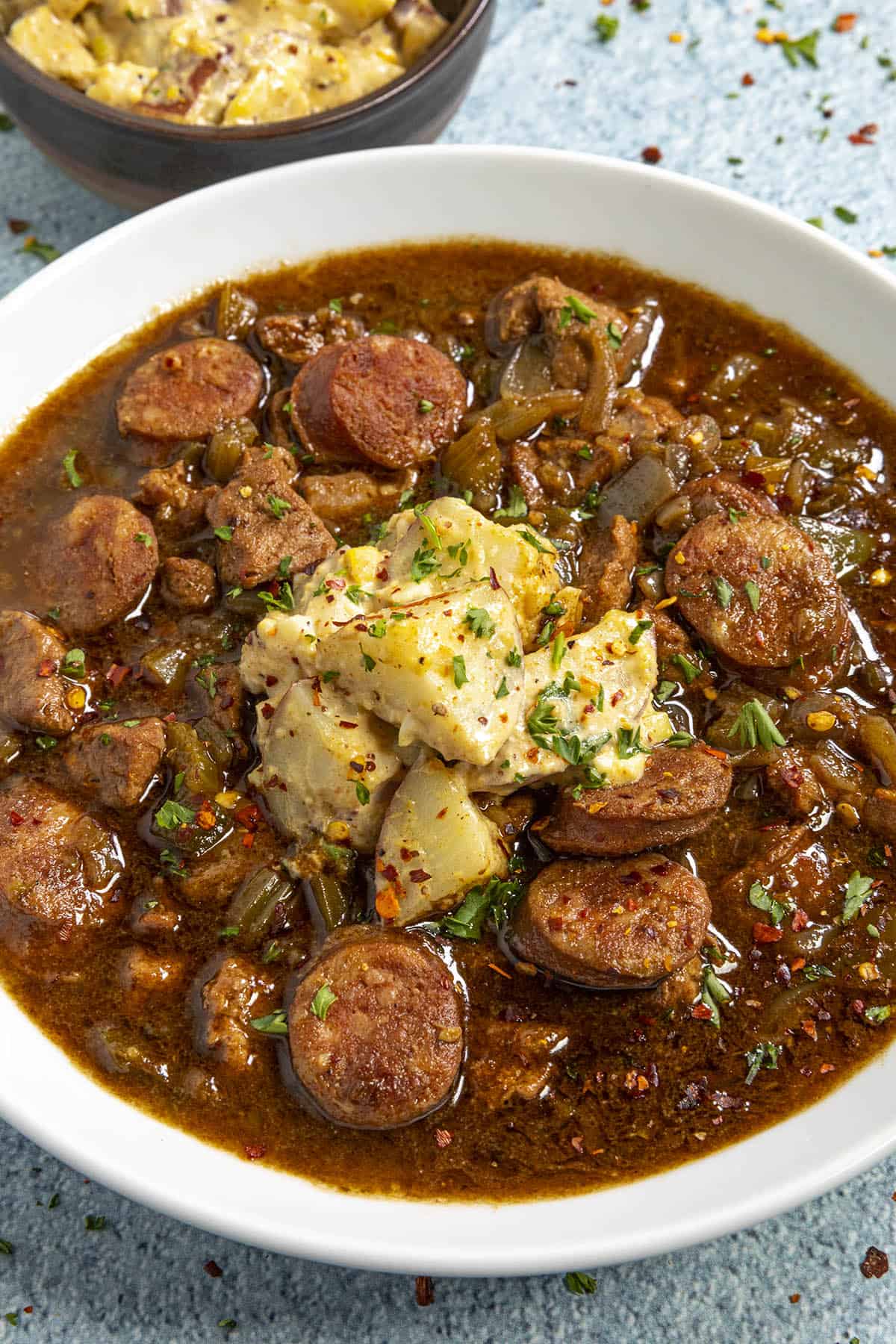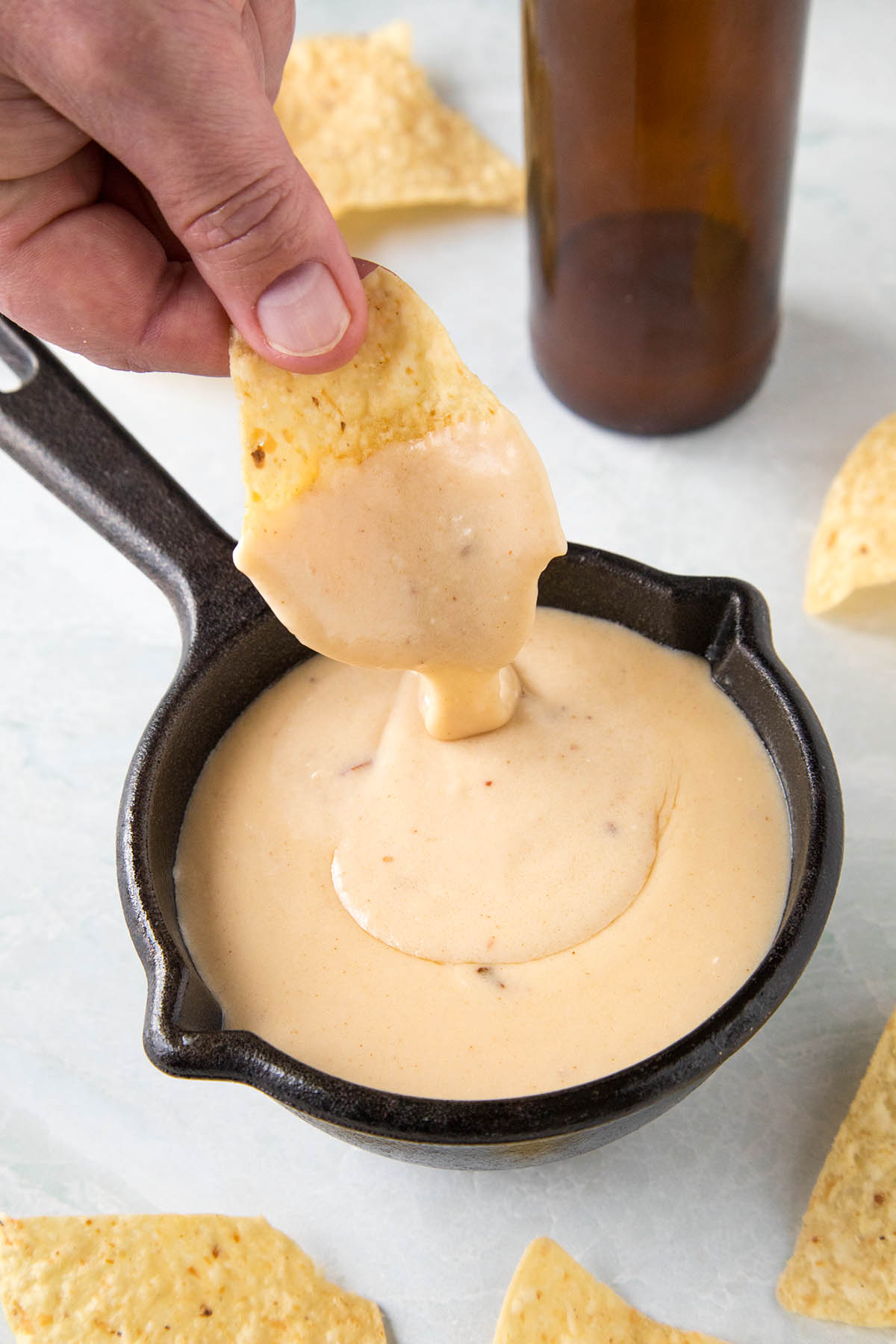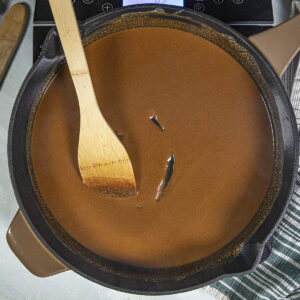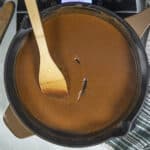Got any questions? Ask away! I’m happy to help. If you enjoy this recipe, I hope you’ll leave a comment with some STARS. Also, please share it on social media. Don’t forget to tag us at #ChiliPepperMadness. I’ll be sure to share! Thanks! — Mike H. The key to a great gumbo, and many other dishes, starts with a good quality gumbo roux. This post will show you how to make roux the right way. It is a cooking technique that originated with French cuisine for sauces and as a thickening agent, but adopted all around the world. A roux is made by heating equal parts of oil, butter or other fat and flour in a pan to form a paste, then stirred continually as you cook it. It will thin and darken as you cook it. The color of the roux depends on how long it is cooked for, and on its intended purpose. White roux is a great gravy roux, but also used for making white sauces, such as béchamel sauce (roux + milk), cheese sauce or nacho cheese base, white gravy, and as a thickener for drippings. It’s great for making thick and cheesy macaroni and cheese! The pan toasting not only changes the color, but also the flavor, giving it a slightly nutty quality. It is also slightly thinner in texture, but still great as a thickener. Blonde roux is perfect for thickening stocks, pan drippings like velouté, making smooth gravies and sauces, and thick soups. It takes about 20-30 minutes to make. Brown rouxs are not as thick as lighter rouxs, but offer a more developed flavor. They are nuttier and richer, though not as good for thickening. It is ideal for slightly thickening soups and stews, and essential for making gumbo. A dark roux can take 30-45 minutes or longer to make, and is a favorite for making rich, flavorful pots of gumbo. This is my personal favorite gumbo roux.
Roux Ingredients
Oil or Other Fat. I usually use a neutral oil, like peanut oil or vegetable oil. You can use other fats, like butter, lard or bacon fat Flour. Use all-purpose white flour.
Stir constantly. The oil and flour will combine to form a liquid slurry. If you don’t keep stirring, the roux will start to burn and you’ll have to start over, so do not stop stirring. Stirring is a must, which also helps prevent lumps. You can smell when the roux burns. It’s acrid, unpleasant, a bit like burnt popcorn. If this happens, toss it and start over. It will ruin the flavor of whatever you are making. So be careful, and don’t bring up the heat too high to hurry your roux along. What you’re looking for is the color of the roux. It starts out the color of flour, very light, batter-like, but as it heats, it will begin to thin and brown, going from a white roux to light brown to the color of peanut butter or copper, and eventually to a rich chocolate brown, and even darker if you continue cooking it. Cooking time can vary based on the amount of heat and other factors. Personally, I take 15-20 minutes for my typical roux of 1/2 cup each oil and flour, which gives me a roux a copper or peanut butter color. The roux is great then, coaxed of outstanding flavor. It can take around 30 minutes or longer to achieve a very dark gumbo roux. When I make a smaller batch roux, such as 2-3 tablespoons each of oil and flour, it takes much less time. If you continue to cook and stir longer, you’ll achieve a darker chocolate color that is even richer in flavor the longer you cook, but a darker roux usually results in thinner sauces, gumbos and soups for most home cooks. It doesn’t thicken as much as a lighter gumbo, though it does have a more nutty flavor. Feel free to experiment to discover which shade of roux produces the best flavors for your taste buds. Some may feel making an oven roux is cheating, but who cares if it saves you time? To make an oven roux, whisk together flour and oil in a cast iron pan or Dutch oven, then bake it at 350 degrees F for about 2-1/2 hours. Give it a good stir every 20 minutes. Once your roux has reached your preferred color, remove it and use it as you would in any gumbo or similar recipe, such as a fricassee or etoufée. If you make a larger batch, freeze your roux in containers and use later. Boom! Done! You now have a roux! Now you can use it in any recipe you’d like. Making roux is easy, isn’t it? No problem at all. Homemade roux will last for months in the refrigerator. It will last for 1 year in the freezer. That’s it, my friends. I hope you enjoy my easy roux recipe. Let me know if you make it. I’d love to hear how it turned out for you. Keep it spicy! The heated mixture allows you to make silky smooth sauces, thicken pan drippings into gravies, and for adding flavor to many different types of soup and stew dishes. NOTE: This recipe was updated on 11/16/22 to include new information and photos. It was originally published on 4/24/20.

